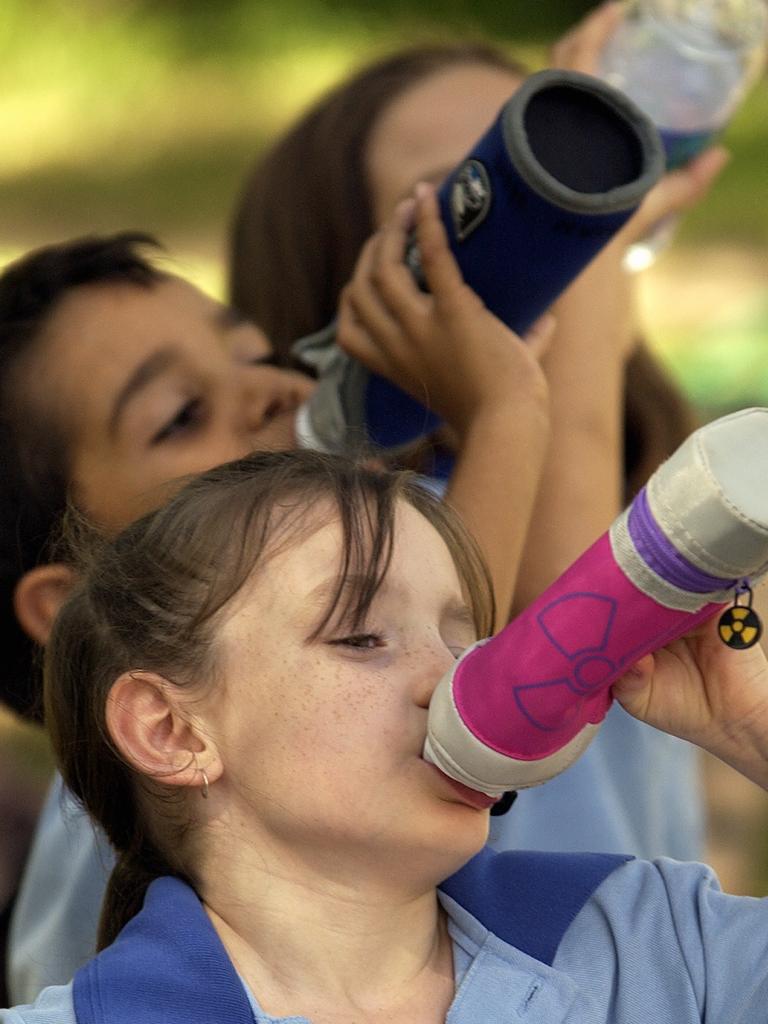Coming in hot: students return to steaming schools with no aircon
Australian students across the country are returning to the classroom for a new year of learning – but a parents’ group says too many schools are not set up to deal with extreme heat

READING LEVEL: GREEN
Australian kids’ return to school has led to concerns that too many classrooms lack enough airconditioning and insulation*, turning them into virtual hotboxes.
Analysis by the advocacy* group Parents for Climate reveals that in December alone, more than 14,000 students in 54 government schools across the country missed a day in class because of extreme heat and/or bushfires.
Of these, 10,903 students were in NSW, and 3173 were in South Australia.
While mild to warm temperatures are forecast for most centres on the eastern seaboard this week, 40 degree days inland to the west could bring extremely hot conditions east next week.

Parents for Climate CEO Nic Seton said the Commonwealth and state governments should “co-operate to ensure all classrooms are safe from heat, and to make sure it’s done in a cost effective way, which means airconditioning supported by energy efficiency* and affordable solar power*”.
Meanwhile Victorian state schools had to organise their own funding to install airconditioning, the group stated.
There were massive differences between the states, Mr Seton said, with Queensland’s Cooler Cleaner Schools program delivering adequate cooling to all state school classrooms, while a similar program in NSW had left 350 schools without airconditioning and ventilation* upgrades.
A NSW Education Department spokesperson said all new schools had airconditioning installed in classrooms and libraries, while the needs of existing schools were addressed on a case-by-case basis. Some 1400 classrooms and libraries in 88 public schools in NSW have had airconditioning installed since April 2023.
An SA Department for Education spokesperson said the closure of 34 schools on December 8 was a “safety issue due to highly dangerous bushfire conditions or power outages”.
While some might wonder if hot temperatures are really such a big deal, given they’re a fact of life for every Australian kid, a report from Parents for Climate late last year argued hot classrooms were not good for learning.

“High air temperatures and lower hydration* are known to affect children’s ability to concentrate,” the report stated. “Studies show that optimal* learning environments have a consistent temperature between 22 degrees C and 24 degrees C. They also show that learning outcomes* decrease by about 1.5 per cent with each 2 degrees C increase in temperature above 24 degrees C.”
Mr Seton said parents who had spoken to the group also expressed concern about the number of times school sports events were being cancelled, or play limited to indoors, because of excessive heat.

Comment from the education departments in NSW and SA was being sought.
In an online statement, the NSW Department of Education said about 600 schools across the state were located in areas with average January temperatures of 30 degrees C or more.
“The Cooler Classrooms Program is designed to support teaching and learning in the hottest parts of the state,” the Department material states. “However, while we acknowledge this, we’re also conscious that students in other areas may also be experiencing hot conditions that are unique to their school or local area.”
POLL
GLOSSARY
- insulation: a thick layer of material used to protect something from cold or noise
- advocacy: the act or process of supporting a particular cause, proposal or course of action
- energy efficiency: reducing the amount of energy needed to provide products and services
- solar power: power is produced when energy from the sun is converted into electricity
- ventilation: moves outdoor air into a building or a room, and distributes the air within the building or room
- hydration: the process of your body absorbing enough water or other liquid
- optimal: ideal, the most favourable
- outcomes: results, consequences, effect
EXTRA READING
How our classrooms have changed
Tiger iceblocks and other heat hacks for a hot Earth
QUICK QUIZ
- How many NSW and SA students missed a day of schooling due to heat?
- Why were 34 SA schools closed on December 8?
- What did QLD’s Cooler Cleaner Schools program deliver in that state?
- What is the optimal temperature range for learning, according to Parents for Climate group?
- How many NSW schools are located in areas with average January temperatures of 30 degrees C or more?
LISTEN TO THIS STORY
CLASSROOM ACTIVITIES
1. Cool schools
What would you estimate your classroom temperature to be? Have you got a room or heater/air conditioner thermostat to measure it?
If you think your classroom is too warm to learn well, what are some environmentally friendly measures you and your classmates could take to cool down yourselves and your classroom?
List them below:
–
–
–
–
–
Time: allow 20 minutes to complete this activity
Curriculum Links: English, Mathematics, Science, Personal and Social, Critical and Creative Thinking
2. Extension
What temperature do you think is too hot to go to school or play outside?
Do you think kids should be kept at home or inside at school on very hot days? Why or why not?
Time: allow 10 minutes to complete this activity
Curriculum Links: English, Science, Personal and Social, Critical and Creative Thinking
VCOP ACTIVITY
BAB it!
Show you have read and understood the article by writing three sentences using the connectives “because’’, “and”, and “but” (BAB). Your sentences can share different facts or opinions, or the same ones but written about in different ways.


